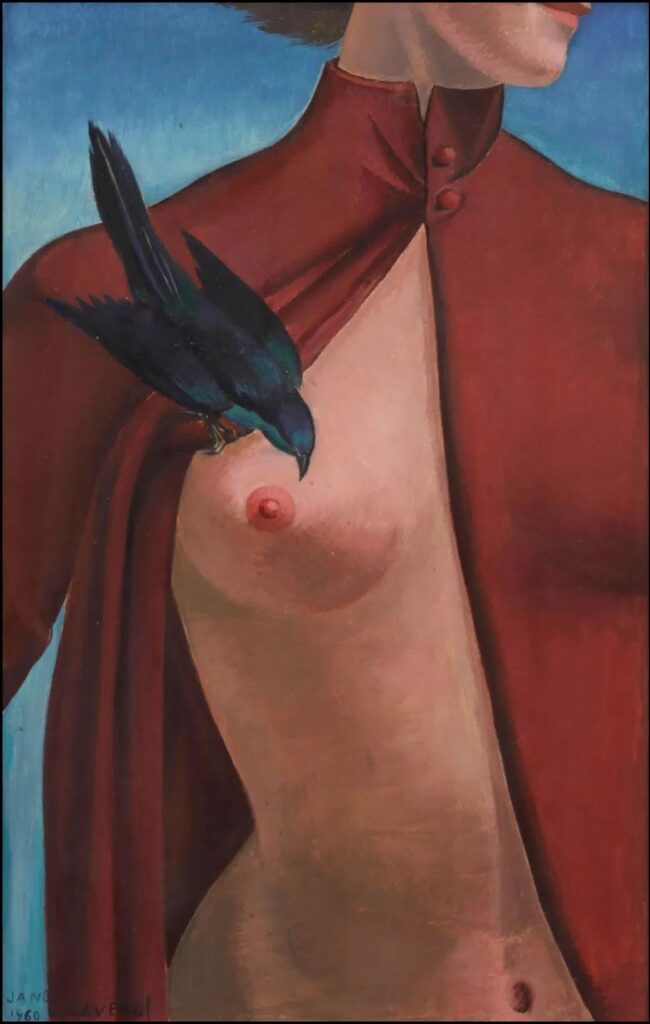Your currently viewing RAW Modern | Switch to RAW Contemporary
Le Sacre Du Printemps, 1960
Jane Graverol’s (1905-1984) earliest surrealist work, which she created prolifically during the 1930s & 1940s alongside the up–and–coming Belgian surrealist group that formed around René Magritte, set her apart from her male counterparts: women, who in the male artists’ pictures are often portrayed as passive, fleeting and incidental, are in Graverol’s paintings given centre stage. Even when in the 1960s and 70s, Graverol moved towards a more figurative style, women remained central to her vision and are invariably portrayed as strong, proud and sensual. In this picture, which dates to 1960, a woman’s breast is unveiled by a dark red cape with a high buttoned collar, while a bird pecks at her nipple. Far from being seductive or titillating, Graverol’s female figures can be read as powerful symbols of modernity and female autonomy. This work was made in homage to ‘The Rite of Spring’ by Igor Stravinsky, a ballet whose theme is the return of spring and whose central narrative revolves around the sacrifice of a virgin obliged to dance herself to death – This groundbreaking work redefined the boundaries of music in the 20th century through its exploration of the unconscious. The parallels between Stravinsky and Graverol’s exploration of the unconscious resonate in this highly charged and deeply disturbing image which is poised so tantalisingly between reality and fantasy.

